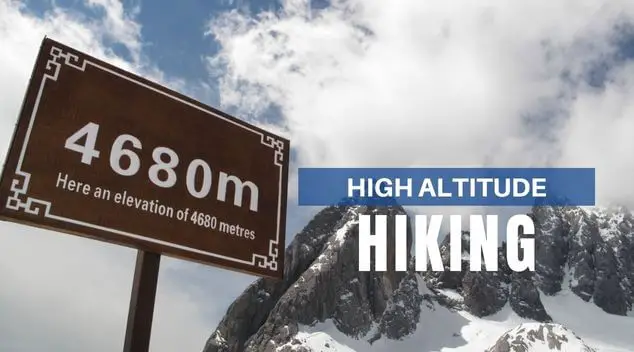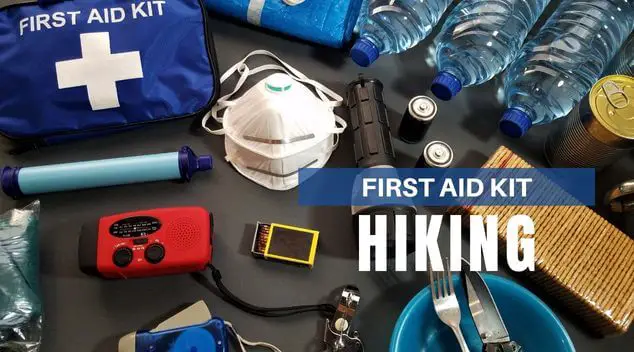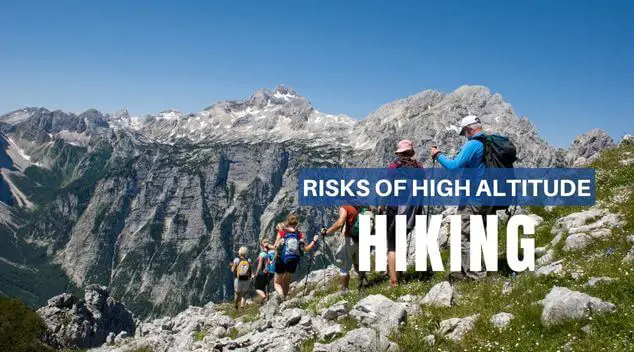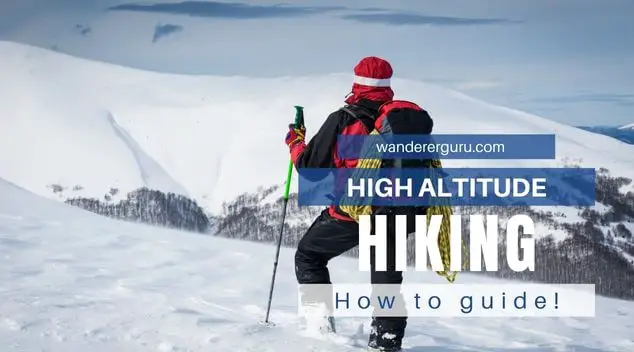If you’re planning a hike that will take you above 3,000 m (10,000 ft). You need to be prepared for the challenges of high altitude. This includes knowing how to prevent and recognize altitude sickness symptoms and being aware of lightning. Preparing your body and mind including your gear before high altitude hiking is always worth it.
Here are 11 tips for High Altitude Hiking
Get acclimatized
If possible, spend a few days acclimatizing to the altitude before embarking on your hike. This can be done by ascending to a higher altitude for a day or two, then descending to sleep at a lower altitude. Otherwise, you can hit the hiking trails in your area to get acclimatized. However, if you are a regular hiker, it’s not a problem.

Go slowly
Even if you are acclimatized, it’s essential to go slow when hiking at high altitudes. A good rule of thumb is to take half the time you would typically take to descend the same distance. The oxygen level drops at high altitudes, causing breathing instability. Use the right pair of trekking poles to balance your weight and reduce your efforts.
Stay hydrated during high altitude hiking
It’s important to stay hydrated when hiking at high altitudes. Dehydration can exacerbate symptoms of altitude sickness. Aim to drink at least 3 to 4 liters of water per day or more if possible. In addition, supplementing electrolytes will increase your output activity at high altitudes. Avoid alcohol and tobacco products, which can dehydrate your body and hinder your ability to adjust to the altitude.
Be aware of the symptoms of altitude sickness
Altitude sickness occurs when your body cannot adjust to the lower oxygen level at high altitudes. Symptoms include headache, nausea, fatigue, and difficulty sleeping. If you experience any of these symptoms, descend immediately and seek medical help if necessary. In avoiding altitude sickness, acclimatization plays an important role.
Don’t push yourself too hard
It’s essential not to ego-hike when hiking at high altitudes. In other words, don’t push yourself harder than you need to prove something to yourself or others. If you feel exhausted, stop and rest until you feel better before continuing your hike. Always try to hike in groups. Group hiking has that support factor required for hiking at high altitudes. Check out the best camping tent for your outdoor adventure.
Be prepared for bad weather conditions
Hiking in high-altitude environments comes with certain weather risks, such as thunderstorms and blizzards. Be sure to check the forecast before setting out on your hike. Always be prepared for sudden changes in weather conditions.
Invest in some quality gear
High-altitude hikes can be challenging. It’s essential to have the right gear that can withstand the rigors of tough terrain. Invest in quality hiking shoes, clothing, and equipment before embarking on your hike. It would be best if you never compromise your hiking and camping gear.
Do some training beforehand
High-altitude hiking could be strenuous because of the thin air. To make sure you’re physically prepared for your hike. It’s a good idea to do some training, like long walks or hikes in hilly terrain. Practice makes everyone perfect. The more you train, the better you become.
Dress in layers
The temperature can drop quickly when you’re above the tree line. You must dress in layers that you can add or remove as needed. Wearing synthetic or wool fabrics that wick away moisture will help keep you comfortable. A balaclava or face mask can also help protect against wind and cold temperatures.
Bring Sunscreen and Lip Balm
Wear sunscreen and protective clothing to shield yourself from the sun’s rays. The sun is stronger at higher altitudes. Sunscreen and lip balm are essential items for any hiking at a high altitude. Be sure to apply them generously and reapply often. Also, check out the list of essential hiking gadgets.
First-Aid kit
Carry a first-aid kit with you in case of emergency. Bring a map and compass in case you get lost or off-trail. Moreover, do not hurt yourself while hiking downhill.

Have a safety plan for high altitude hiking
Let closed ones know where you’re going before embarking on a hike is always a good idea. But this is especially important when hiking at high altitudes. Make sure someone knows your planned route and expected return time. So they can raise the alarm if you don’t return when expected. Check out the best budget hiking watches that can help you record the trail.
The Risks of High Altitude Hiking
High altitude hiking can be risky. It is crucial to know the potential dangers before undertaking any high altitude hike. Some of the risks associated with high altitude hiking include:

Acute Mountain Sickness (AMS)
AMS is a condition that can occur when hikers ascend to altitudes above 8,000 feet. Symptoms of AMS include headache, nausea, vomiting, fatigue, lightheadedness, and difficulty sleeping. AMS can be fatal if left untreated. It is important for hikers to be aware of the symptoms and to descend if they begin to experience any of them.
Altitude Sickness
Altitude sickness is a condition that can occur when hikers ascend too quickly and their bodies cannot adjust properly to the change in altitude. Symptoms of altitude sickness include headache, nausea, vomiting, lightheadedness, and fatigue. Altitude sickness should be treated as soon as possible.
Hypothermia
Hypothermia is a condition that occurs when the body loses heat faster than it can produce it. Symptoms of hypothermia include shivering, confusion, slurred speech, drowsiness, and poor coordination. Hypothermia can be fatal if left untreated. It is important for hikers to be aware of the symptoms and seek shelter and warmth if they experience any of them.
Frostbite
Frostbite is a condition that occurs when exposed skin tissue freezes. Symptoms of frostbite include numbness, white or blueish skin, and hard or waxy-looking skin. In some cases, frostbite can be permanent if left untreated.
Dehydration
Dehydration is a condition that occurs when the body loses more fluids than it takes in. Symptoms of dehydration include thirstiness, fatigue, lightheadedness/dizziness, dark urine, and dry mouth. Dehydration can be dangerous in severe cases. Always keep your body hydrated while high altitude hiking.
Heat Exhaustion
Heat exhaustion occurs when the body overheats due to exposure to hot temperatures or strenuous activity. Symptoms Of Heat Exhaustion Include Heavy Sweating, Paleness, Muscle Cramps, Headache, Nausea, and Dizziness. Heat exhaustion can lead to heat stroke which is a Medical Emergency.
Related Article: HIKING IN THE SUMMER HEAT
By following the tips we discussed in this article. You can avoid risks associated with high altitude hiking.
What to do if you experience Altitude Sickness?
If you experience symptoms of altitude sickness. The best thing to do is to descend to a lower altitude. If descent is not possible, then lie down and rest:
– Drink lots of fluid
– Do not smoke
– Avoid alcohol
– Eat light meals
– Pace yourself
The Different Types of High Altitude Hiking
There are two types of high altitude hiking, summiting and trekking. Summiting is when your main goal is to reach the peak of a mountain. While trekking is when your focus is on completing a long journey through mountainous terrain.

Trekking
-Choose a route that avoids challenging ascents and descents.
-Start slowly and increase your speed as you acclimatize to the altitude.
-Carry plenty of food and water, and take breaks often.
-Be prepared for changes in weather conditions.
–Pack light, comfortable clothing, and sturdy footwear.
-Bring a map and compass, and know how to use them.
Summiting
-Climb gradually, giving yourself time to acclimatize to the altitude.
-Be prepared for extreme weather conditions.
-Pack light, but include essentials such as warm clothing, shelter, and emergency supplies.
-Carry enough food and water for the entire journey.
-Use ropes and other climbing gear as necessary.
Benefits of High Altitude Hiking
The benefits include improved cardiovascular health, increased lung capacity, and strengthened muscles. In addition, high altitude hiking can help you burn more calories and improve your overall fitness level.

